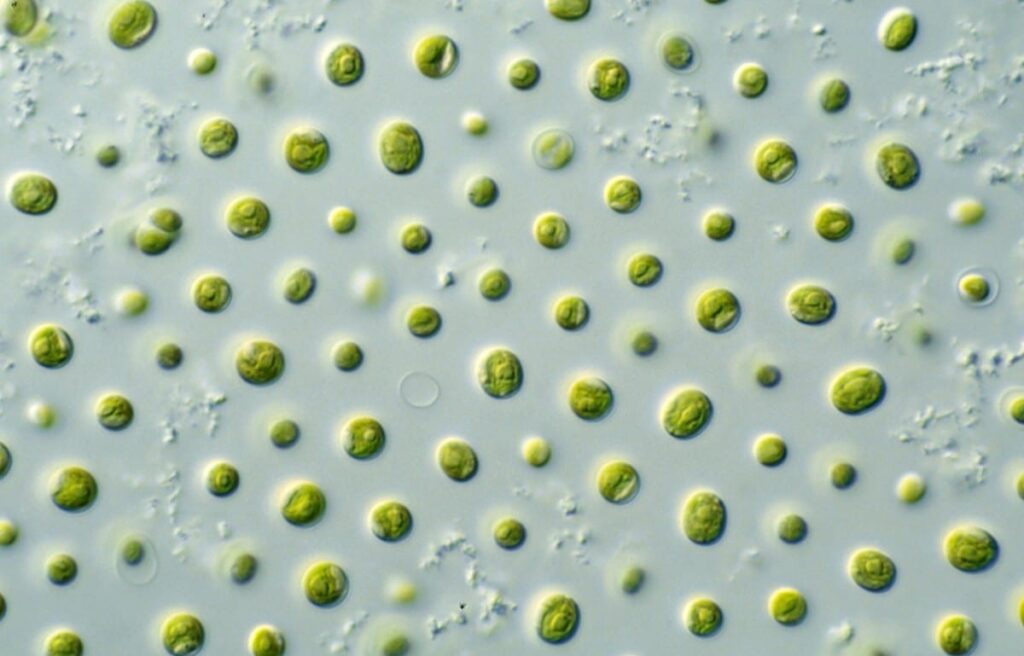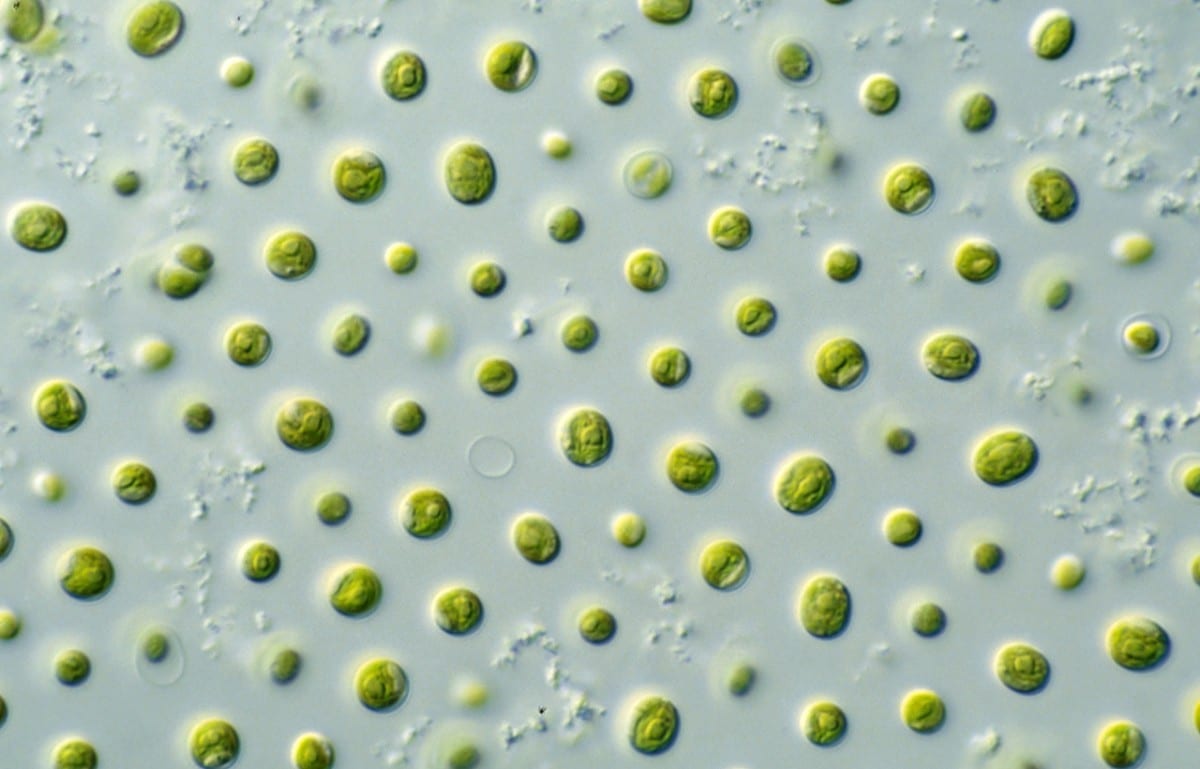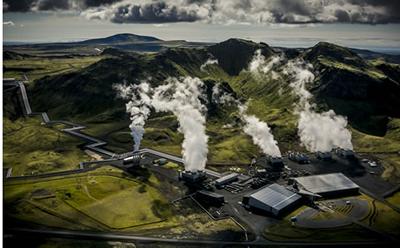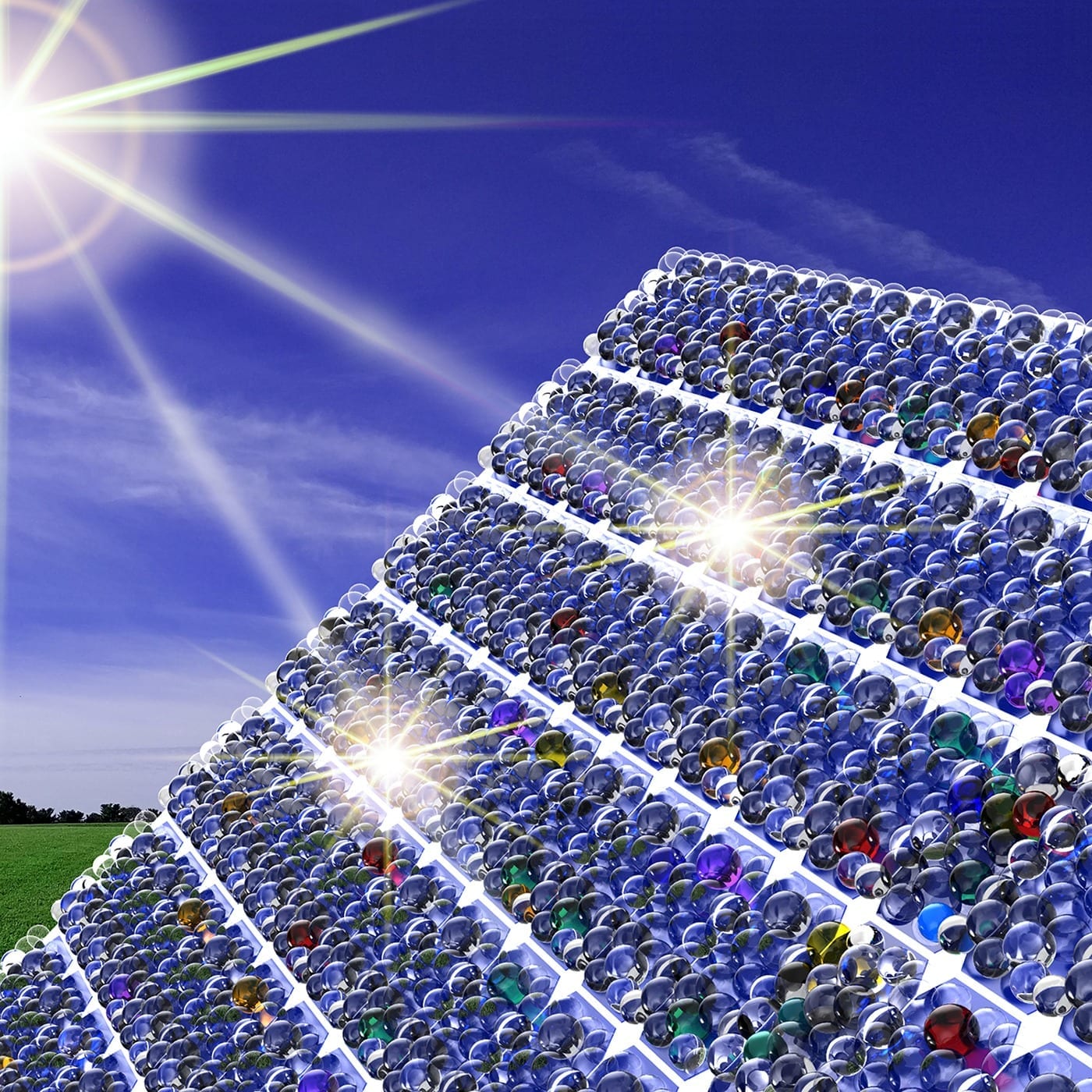
Algae, pictured here under a microscope, may be a key to unlocking an important negative-emission technology to combat climate change.
An unconventional mélange of algae, eucalyptus and bioenergy with carbon capture and storage (BECCS) appears to be a quirky ecological recipe. But, scientists from Cornell, Duke University, and the University of Hawaii at Hilo have an idea that could use that recipe to help power and provide food protein to large regions of the world – and simultaneously remove a lot of carbon dioxide from Earth’s atmosphere.
“Algae may be the key to unlocking an important negative-emissions technology to combat climate change,” said Charles Greene, Cornell professor of Earth and Atmospheric Sciences and a co-author of new research reported in Earth’s Future, published March 24 by the American Geophysical Union.
“Combining two technologies – BECCS and microalgae production – may seem like an odd couple, but it could provide enough scientific synergy to help solve world hunger and at the same time reduce the level of greenhouse gases that are changing our climate system,” Greene said. Based on an idea first conceptualized by co-author Ian Archibald of Cinglas Ltd., Chester, England, the scientists call the new integrated system ABECCS, or algae bioenergy with carbon capture and storage.
The ABECCS system can act as a carbon dioxide sink while also generating food and electricity. For example, a 7,000-acre ABECCS facility can yield as much protein as soybeans produced on the same land footprint, while simultaneously generating 17 million kilowatt hours of electricity and sequestering 30,000 tons of carbon dioxide per year.
The ABECCS system’s economic viability depends on the value of the nutritional products being produced and the price of carbon. Even without a price on carbon, microalgae production – in a fish-farming, aquacultural sense – is commercially viable today if the algae are priced as a fishmeal replacement in aquafeeds.
“In the future, as the price of carbon increases, ABECCS has the potential to reduce carbon dioxide in the atmosphere in an environmentally sustainable and profitable way,” said Greene, who is a fellow at Cornell’s Atkinson Center for a Sustainable Future.
Learn more: Algae-forestry, bioenergy mix may help make CO2 vanish from thin air
The Latest on: BECCS and microalgae production
[google_news title=”” keyword=”BECCS and microalgae production” num_posts=”10″ blurb_length=”0″ show_thumb=”left”]
via Google News
The Latest on: BECCS and microalgae production
- Edonia grabs €2M to turn microalgae into less bitter-tasting ground meat alternativeon April 24, 2024 at 5:00 pm
Paris-based Edonia, is one of the startups working on creating protein ingredients using microalgae. Now armed with €2 million ... This will enable it to commercialize its production more rapidly. The ...
- JX to join forces with Sumitomo at large scale SAF/BECCS project in Louisiana (U.S.)on April 24, 2024 at 8:13 am
JX Nippon Oil & Gas Exploration Corporation and Sumitomo Corporation executed consortium agreements to manage investment in the Louisiana Green Fuels BECCS project at Port of Columbia, Caldwell ...
- Harnessing the Power of Microalgae-Material Hybrids Paving the Way to Carbon Neutralityon March 26, 2024 at 3:27 am
In the quest for sustainable solutions to mitigate climate change and achieve carbon neutrality, researchers are turning to nature’s biological systems for inspiration. Among these systems, microalgae ...
- A microalgae–material hybrid promotes carbon neutralityon March 25, 2024 at 2:01 pm
Microalgae, including cyanobacteria and green algae, represent the most important biological systems for producing biomass and high-value products. It is estimated that microalgae can fix about 90 ...
via Bing News











